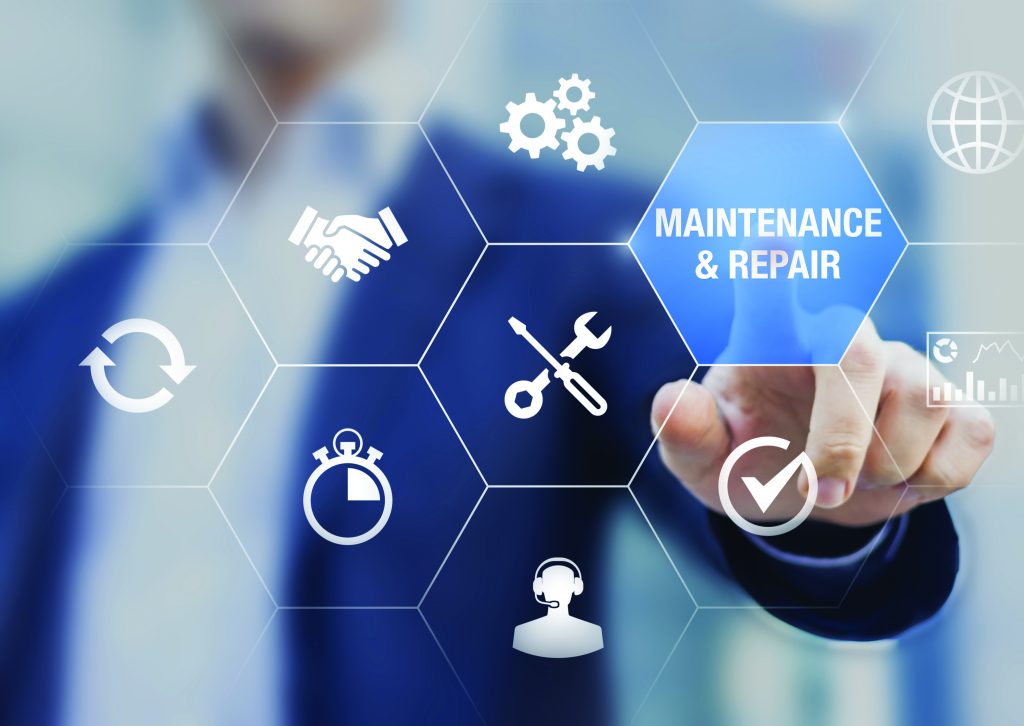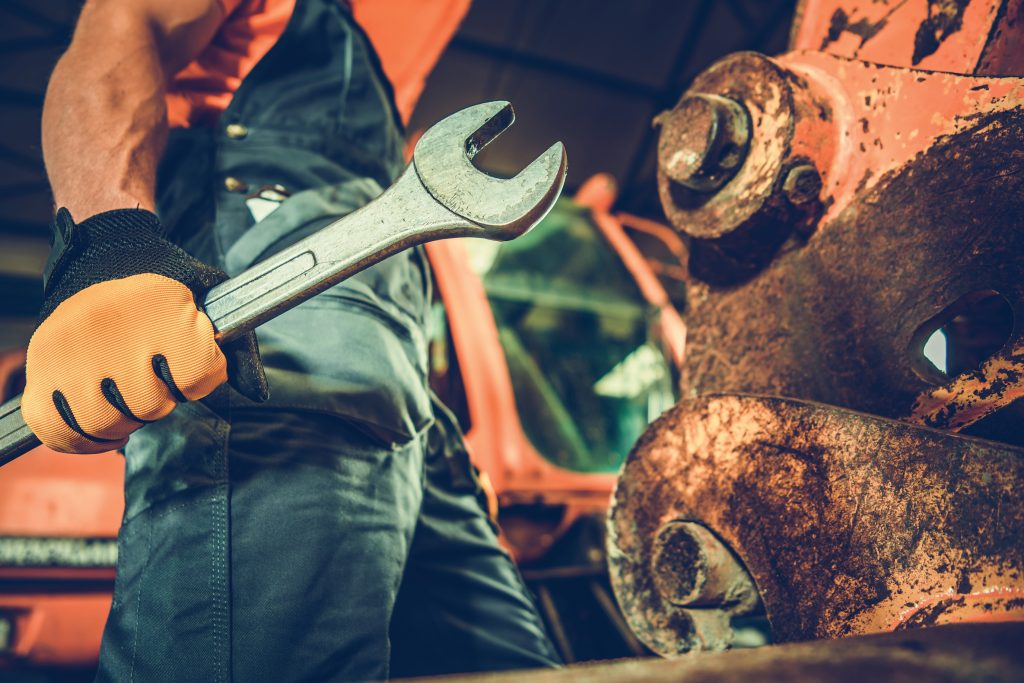
Repairs, Service, and Ramping Up After COVID-19
Many companies are struggling to get back to normal as COVID-19 concerns are reduced, then raised again.
August 30, 2021 | By James Reyes-Picknell
 Photo: © NicoElNino / Adobe Stock
Photo: © NicoElNino / Adobe Stock 
Photo: © NicoElNino / Adobe Stock
We are all living with a lot of uncertainty and an astounding lack of cohesion among those directing the responses.
On the COVID-19 front, we are learning a lot, and now we know what works and what doesn’t. As we exit the pandemic, we will be learning some tough lessons about reliability, maintenance, repairs and services and how to keep a business “pandemic proof” in the future.
The business impacts of COVID-19 are substantial
Our supply chains, highly networked globally, are feeling the effects of our actions to contain, control and deal with the disease. Those measures will continue for a long time as those countries grappling most with the virus are also those least developed and having the lowest cost labour. They are also at the input end of our supply chains. Goods and services don’t simply flow
freely anymore.
Further down those supply chains, we depend on those cheap sources of raw materials, processed goods, products, and parts. In maintenance, we are now experiencing much longer lead times for parts and materials. We need those for our preventive maintenance, capital replacements, and of course, for repairs.
Maintenance impacts
Repairs that arise without warning have always been a challenge, and the more of them you do, the more challenged you are.
Where maintenance programs were less ineffective, there is more reactive maintenance – “break then fix” is the default strategy. Poor planning and materials forecasting are common hallmarks of organizations that have defaulted to this strategy. It’s expensive and it leads to lowered levels of production capacity, even in “normal” times.
That high cost was driven by purchase and shipping costs for parts that were not forecast, the need to rush them to site, and by delays in repairs that lead to increased downtime. We now have even longer lead times and reduced supply entering the supply chain. Costs, lead times, and the opportunity cost of lost production capacity are all substantially higher than before the pandemic.
Proactive approaches
Smarter companies with proactive approaches had better forecasting, planning and more effective reliability programs.
They, too, experience longer lead times and higher prices, but they are also in a position to manage them much better. If their reliability programs were already well-defined using reliability centered maintenance, the only lasting impact of COVID-19 will be lead times, and their impact on stores quantities and procurement. They very likely have the spares they need to sustain operations during the transition period while their supply chains adjust.

Photo: © Tomasz Zajda / Adobe Stock
“Fake reliability” is now widespread
Throughout the COVID-19 period, production assets continued to run, many at lowered outputs. Physical degradation of the assets was reduced, so assets ran better and failed less often. Even with reduced maintenance staffing, less overtime, fewer contractors, and no targeted reliability improvement efforts, their operations were stable and reliability seemed to have improved. However, that calm state is really a phenomenon that has now created a false sense of security when it comes to reliability.
Many pre-COVID-19 improvement initiatives were shelved as cost cutting measures. The assets continued to run, seem to be running well, but what will happen with a return to normal as demand for products surges?
Old reliability problems will resurface and breakdowns will again increase to pre-COVID-19 levels or higher. Compounding the problem with increasing breakdowns is the fact that the ability to repair them has been dramatically reduced.
Discretionary doesn’t necessarily mean unimportant
COVID-19 survival cost containment measures led to cutting of discretionary spending. In maintenance, the proactive aspects of maintenance programs and capital replacements are all discretionary. Some workers were laid off. Contracted services and the use of most contractors were cut. Travel, consultants and training were all cut back, if not eliminated. Maintainers who remained on the job were heavily challenged to learn and respond with fewer resources and support. They rose to the occasion, and like front line health care workers, they’ve taken a beating.
Costs went down, companies survived, essential workers burned out.
Manufacturing and processing operations depend on regular maintenance to remain reliable. Deferred replacements and proactive maintenance both have risks with potentially negative long-term impacts. The cumulative risk of failures has grown, more or less unchecked. In most cases, that growth is exponential. Improvement initiatives aimed at reliability stalled.
There is a rising trend in serious accidents
If you pay attention to the news, you’ve probably noticed that chemical plants, food plants, refineries, and more are experiencing an upsurge in significant and often dramatic failures with loss of lives, injuries, pollution and significant business losses. Have our industrial responses to COVID-19 created a ticking time bomb? I believe so.
If the proactive work doesn’t come back to normal quickly, those disastrous events will continue.
Is normal good enough?
The “normal” proactive maintenance in many operations wasn’t actually all that effective. Reliability problems abounded before COVID-19. They are likely to be just as bad if not worse now. During COVID-19, cost reductions curtailed just about everything that was being done to improve except computer system implementations. We still haven’t learned that “systems are not substitutes for strategy.”
Good maintenance practices execute good reliability programs. The effort to put those in place is also discretionary, important, and all-too-often, absent. Now, who will do that work?
Many of the engineers and technicians who would be needed to do that work were sent home, or laid off. Like your trades, you may find that you need new people with a need to learn before they’ll be effective.
Skilled talent at low cost – where?
Before COVID-19, it was increasingly difficult to find skilled trades. During COVID_19, reduced staffing on shifts, layoffs and furloughs sent many employees home.
Retirements of the most experienced, the baby boomers, continued. They would have left anyway, but their knowledge could have been transferred if anyone was thinking about it. The pandemic gave no warning, and took away that opportunity. Knowledge transfer didn’t happen and it’s too late for much, but not all of it.
Skilled trades are difficult to find and replace. If they were laid off, they likely found new jobs. Many of them are gone for good, and their knowledge of your operation and equipment went with them. Replacements will need to learn, and they are likely to be more expensive.
Unions that are in positions to bargain will now have a big advantage when it comes to asking for more pay. As I write this, we are seeing exactly that with the Canadian border services staff, and literally days before the border with the U.S. opens. The posturing is just beginning.
Training delivery methods changed during COVID-19
Live-virtual has replaced face-to-face and works reasonably well, where your students can stand to sit by a computer for hours on end.
Completely online delivery methods are on the rise. They are less expensive and capable of delivering richer content while enhancing the learning through quizzes and assignments. Unfettered by time zone and even language challenges, training can be self-paced and taken whenever the student can find the time. Pre-recorded, self-paced online courses are growing in popularity, particularly among younger workers – the ones you will be depending on. Your accountants like them too – they are the least expensive option.
Reliability is the key to future performance
Old ineffective break-then-fix approaches to operations and maintenance require high spending, a high tolerance for downtime and a fat maintenance workforce to handle all the fire-fighting. If your maintenance program had any more than about 30 per cent of repair work on non-critical assets, then you have room to improve. Doing so will require a re-definition of the maintenance tasks that your maintainers perform using reliability centred maintenance on critical assets, and PM review/optimization techniques on the rest.
Deeper understanding of your plant and equipment functions, failure modes and the proactive options for dealing with those, and their consequences is needed. That means training and then putting it to use in a critical examination of your maintenance programs. Increasingly, you can ill-afford to keep avoiding this reality.
Companies that get it, will enjoy lower operating costs and higher availability for productive uses of those assets. Companies that don’t, risk becoming take-over targets, or fading into history because of their lack of competitiveness.
Younger new employees can be a competitive advantage in this challenging environment
Although less experienced and in need of training, newer employees are open to receiving it and putting it to good use. Give them the needed training to develop those needed reliability programs, mentor them as they put it into practice, and you are setting the stage for a more reliable future.
We are already working with newer employees who are learning reliability methods. We are putting that new learning into practice as we analyze the reliability needs of their plant equipment and systems. It is helping them learn those systems quickly and in greater depth than the experienced workers who are still there. They are finding problems that have been present for years and solving them.
Those new employees are ramping up fast with that sort of help. Without it, they would flounder and end up making the same mistakes that helped the older, now gone, workforce gain its experience.
The overall picture is bleak, but there are some truly bright spots
Continue to cheap-out in cost cutting mode and you will fall behind while your risks of failures, their negative consequences, and your inability to recover from them grow. Don’t just train and forget. It doesn’t work. Start investing in training of your new hires and in putting that training to work in mentored reliability analysis work. You can make up for the sins of the past with a conscious effort to do so. It won’t happen on its own nor naturally. Only chaos increases naturally. MRO
_________________
James Reyes-Picknell, PEng is Principal Consultant of Conscious Asset, providing business consulting and training services in Physical Asset / Maintenance Management and Reliability. He is author of several books, including Reliability Centered Maintenance – Reengineered in 2017 and Uptime – Strategies for Excellence in Maintenance Management, 2015. Reach him by e-mail him at james@consciousasset.com or visit www.consciousasset.com.
